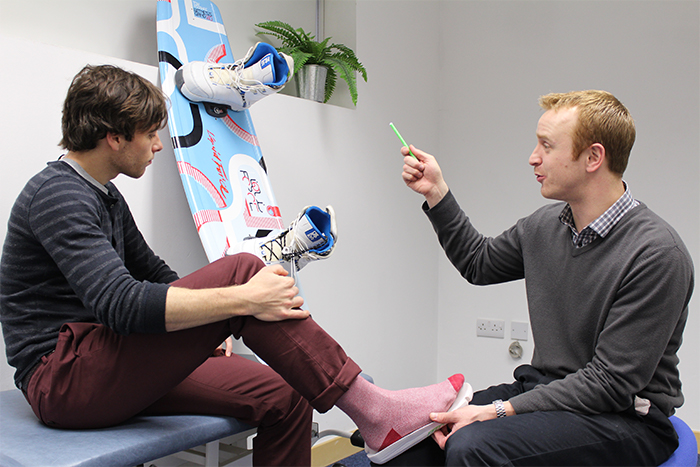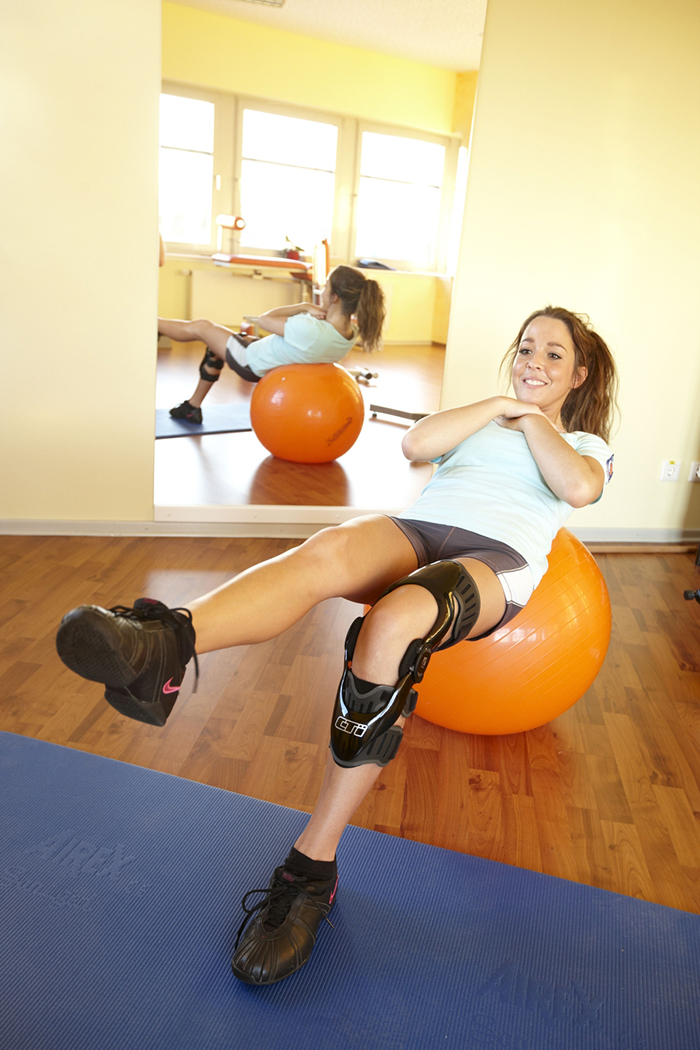CTi knee braces are one of the leading knee braces currently available worldwide – and are used for the prevention of injury or stopping an existing one from worsening. Made from carbon fibre, they are both extremely light and strong – allowing the wearer both comfort and reliability.
The braces are fitted with a number of hinges, enabling enough movement with which to carry out sport and daily activities – whilst also holding the knee in a safe position. This means that even whilst wearing one, you can take part in physical activity – be it skiing, wakeboarding or any other sport.
They also offer great comfort due to the bio-inert Össur® Sensil® Silicone lining – making them both comfortable and practical.

CTi braces are used by both professional and amateur sportspeople to treat a range of injuries. These include:

The anterior cruciate ligament (ACL) is the band of tissue that connects the thigh bone to the shin bone at the knee joint. It provides knee joint stability and helps to control the back and forth movement of the lower leg. An injury to the ACL can be severely debilitating.
A torn ACL makes the knee unstable and lose its full range of movement.
ACL tear one of the most common types of knee injuries and can be caused by:
When the tear occurs patients often speak of hearing an audible pop or crack at the time of injury. Invariably swelling will usually develop rapidly; this is caused by an excess of blood in the knee joint due to rupturing of the blood vessels around the ACL. When the swelling has gone down examination of the knee joint will establish how severe the tear is by measuring the range of movement possible, particularly the ability to straighten the leg.
Protection of the torn ligament is vital to prevent further damage. Crutches can be used to minimise weight-bearing strains on the knee joint. A hinged knee brace will limit movement in the knee and provide support to the knee joint. Full recovery may take some months.
In the long term a functional knee brace can be used to provide maximum stability to an unstable knee to allow someone to return to high impact sport such as skiing or wakeboarding. Such braces are often used, along with a rehabilitation physiotherapy programme, as an alternative to reconstructive surgery. Functional knee braces can be “off the shelf” or “custom made”. An assessment by one of our experienced clinicians will determine what your most appropriate option would be.
Protective knee braces are also a common treatment option for those who suffer from other types of knee injury, like injuries to the Posterior Cruciate ligament(PCL), the Medial Collateral ligament (MCL) and the Lateral Collateral ligament(LCL). For those who want to continue their high impact sport such braces provide the necessary protection to avoid further damage.
Find out how one of our patients managed to enjoy a week’s skiing with the CTi brace, after being told by a consultant to cancel the holiday.
| 'Off the shelf' knee brace | from £480 |
| Bespoke knee brace | from £800 |

Join The London Orthotic Consultancy in celebrating Cerebral Palsy Awareness Day on March 25th. Learn just how important expert orthotic care is in enhancing mobility, independence, and quality of life for children and adults with cerebral palsy.

Introducing the Agilik™ smart orthosis, a cutting-edge, powered knee orthotic now available in the UK through the London Orthotic Consultancy. Unlike traditional KAFOs or heavy exoskeletons, the Agilik™ provides dynamic knee assistance and offers real-time support, reducing fatigue and improving posture. This pioneering, modern technology can help children and adults with lower limb weakness walk more efficiently and naturally. We are honoured to be selected as the exclusive paediatric specialist centre in the UK for the Agilik™ device.

When Sophie noticed her baby Max had a persistent flat spot on his head, she was told it would resolve naturally—but it didn’t. Seeking a second opinion led her to the London Orthotic Consultancy, where Max was diagnosed with severe plagiocephaly.

A little more than four years after the LOCband Lite's launch, we're proud to have successfully treated our 250th helmet therapy patient at our Romford clinic using our cutting-edge 3D-printed cranial band. After five months of treatment, her final scan showed that her asymmetry had decreased from 12 mm to 3 mm.

Sky News published an article this month quoting scientists at Southmead Hospital who claimed there was a lack of research into flat head syndrome and its treatment with cranial remoulding (helmet) therapy. This is our response.

With our non-surgical treatment plan, Alex achieved 100% chest correction in just two years. His treatment involved a combination of dynamic chest compressor and vacuum bell therapy treatment to address his pectus excavatum and rib flaring.

Learn how a custom carbon fibre AFO helped Gill regain mobility and comfort despite complex challenges from shin bone (tibia) removal. We created a truly tailored orthotic solution made from pre-preg carbon fibre at our Cambridge clinic.

Discover how bespoke orthotics and the OSKAR program with Elaine Owen transformed Archie’s life with cerebral palsy quadriplegia, helping him avoid a wheelchair and achieve greater mobility.